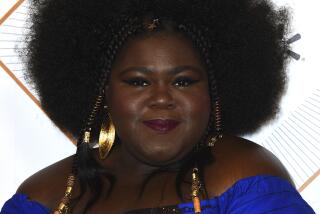Seeing Double : There’s a six-block stretch of Hancock Park like no other. Life here is measured on a different scale. Why? Meet five families, all with young twins--and set No. 6 is soon to arrive.
- Share via
Shelley Smith’s discovery of an odd and wonderful apparition began last October in the baby food section at Ralph’s. Smith, the mother of twins, was shoveling a cargo of supplies into her cart when Roberta Wolff took notice.
They struck up a conversation, and although Smith had made no reference to having twins, Wolff knowingly asked, “How old are they?”
Perhaps it was because Wolff is a lawyer, trained to weave evidence into hypothesis. Or maybe it was because she, too, is the mother of toddler twins.
Beyond the shared experience of parenting twins, Smith and Wolff discovered they also lived on the same street in Hancock Park.
That was the beginning.
Within a week, while Smith was in front of her house and young Nicholas and Miranda were playing on the grass, Stacie Moss turned the corner pushing Tommy and Max in a stroller. More twins. And it didn’t stop there. From up and down the street, it seemed, twins were surfacing like salmon in a stream.
Smith has an unusual occupation. She runs a surrogacy and egg donor program to assist couples wanting children. There are, perhaps, a dozen or so such businesses in the country. So it was with surprise that she learned that living on the same block was Bill Handel, a radio talk-show host who also is founder and director of a surrogacy program.
She was further astounded to learn that Handel and his wife, Marjorie, also had young twins. The count stands at five sets of twins, all younger than 15 months, living on a six-block stretch of the same street.
But there’s more.
Back in November, Wolff, the lawyer, noticed a family moving into a house on their block. She stopped to welcome Rose and Gary Peskin to the neighborhood. Rose was pregnant. In a couple months, the Peskins will push the twin figure to six.
The odds of having twins are about 1 in 80. With in vitro fertilization, utilized by several of the families, the frequency of multiple births is significantly higher, about 1 in 4. But what are the odds of them living in the same small area?
“Bizarre, isn’t it?” says Smith.
*
Three of the mothers--Smith, Wolff and Moss--along with their children have started getting together on Wednesdays to compare notes. Wolff has two girls, Moss has two boys and Smith has one of each.
To have twins is to have context, a means of comparison parents lack with a single child. Wolff and her husband, Ben Whitwell, noticed that Emma’s head was much smaller than Rosie’s. They asked the doctor if her head was too small. Was something wrong?
The doctor assured them that Emma’s head was not too small. Well, then, was Rosie’s head too big?
Being the parent of newborn twins requires a different scale of math. Like hay measured by the ton and not the bale, the standard unit of diapers is the box. Sleep, on the other hand, is measured in minutes.
One never buys just one pair of socks or shoes, one binky or bottle. Everything comes in increments of two. When Pampers go on sale, it is an all-out sprint to the store.
“Usually, they’re all out by the time I get there,” Smith says. “But when they’re not, I buy all of them. Sorry Roberta.”
Smith’s husband, Reid Nathan, points out the mathematical dilemma created by two young mouths to feed.
“When they were very young and Shelley was trying to breast-feed them, the idea was, if you’re breast-feeding a child, you should breast-feed every two hours,” he explains. “Well it takes 45 minutes to breast-feed one child, so if you start doing the math. . . .”
Too little time, too few breasts, not enough hands.
Some of the math is difficult to interpret and explain, particularly when it comes to measuring degree of difficulty.
“It may not be any harder than being one person raising one baby,” says Whitwell, Wolff’s husband. “It’s a heck of a lot more than double two people raising one baby.”
Marc and Stacie Moss have a 3-year-old daughter, Hanah. Marc adds this component to the equation: “Raising twins is more than twice the work of raising a single child. . . . With three kids, two of them young twins, it’s mathematically impossible to get a good night’s sleep.”
Zachary Peskin is also 3 and eagerly awaiting the arrival of his twin siblings. “Boys have six babies, girls have four babies and mommies have two babies” is how it adds up to him.
There is no way to predict precisely what the demands and the joys will be prior to having twins. Both can be overwhelming. “There was a period right after they were born when we were lucky to eat or bathe,” Whitwell says.
But, then, he also learned an important lesson about himself: “I knew before they were born that I would love them, but I had no idea how much.”
His wife says her greatest joy--the births of Emma and Rosie--was followed by her greatest pain: the death of her father. “I’m so glad,” she says, “he met them before he died.”
Tommy and Max Moss never met their maternal grandfather, but Tommy bears his first name; and all three Moss children have the middle name of Hofheimer, their mother’s family name.
They represent a continuum of life, but as Marc Moss looks back on his sons’ first months, there is a gap in his memory attributed to the consuming demands of parenthood.
“I really don’t remember anything that happened between May 1 and maybe sometime in September,” he says.
Stacie Moss, who typically tracks the twists and turns of the various sports seasons, was recently shocked to hear that the NFL regular season had concluded and the playoffs were in full swing.
How is it that babies, with fists so small and legs not yet capable of lifting them, can so effortlessly shatter the rhythms of life that came before them? Night and day become scrambled and indistinct. Weeks seem to have no beginning or end.
But right when parents feel they are pushed to the limit, they say their twins bring uproarious comedy and gentle poetry. They form new contours to the lives around them. In the middle of the night on their street, mothers and fathers moon and hold babies gently in their arms. Too tired to be silly, they speak softly, drifting nearly to sleep themselves.
Whitwell turns on the television, the volume turned low. He has learned that “Perry Mason” comes on at 3 a.m. Wolff chimes in that “Hard Copy” comes on at 5:30.
Eventually, the chaos ends, the crying gives way to precious silence; and they have learned that the soft breathing of a tiny body, warm against their shoulder reveals the essence of new life: It is nothing less than a miracle. Multiplied by two.
To see the miracle, one must know life’s fragile nature. Marjorie Handel nearly died after giving birth. Medication for a liver ailment caused a life-threatening reaction requiring surgery 15 hours after giving birth. She couldn’t stop bleeding.
New life is viewed in brilliant, luminous light when emerging from darkness, and Marjorie gives thanks each day for her family. In 1982, she was paralyzed from the waist down after back surgery; it took her a year to learn to walk.
In 1990, her mother died. A year before the twins were born, the Handels’ first attempt at assisted pregnancy failed.
Life is something Marjorie and Bill Handel do not take for granted. “Now that we have them,” she says of her children, “I can’t imagine how I could have lived without them.”
Before Pamela and Barbara Handel came home from the hospital, Marjorie took both of their tiny right hands and lifted them into the air. She made them promise they would always be best friends.
There will be many friends to choose from in the coming years. On their street, they will have to be taught that babies do not always come in pairs.
Three blocks away from this Twin Alley lives a 62-year-old woman named Grace. When she was a child, she had a secret, pretend twin. And when each of her three children was born, she silently wished for twins.
Last year, doctors told her that she had cancer, the same disease that claimed her husband, who died in 1976. It was the darkest of times as she suffered through chemotherapy, her beautiful silver hair falling in clumps.
Six months after she finished her last round of treatment, her daughter-in-law gave birth to Elizabeth Lorraine and Emily Grace.
The birth announcement was a drawing of Noah’s Ark, with the words, “God sent them two by two.”






